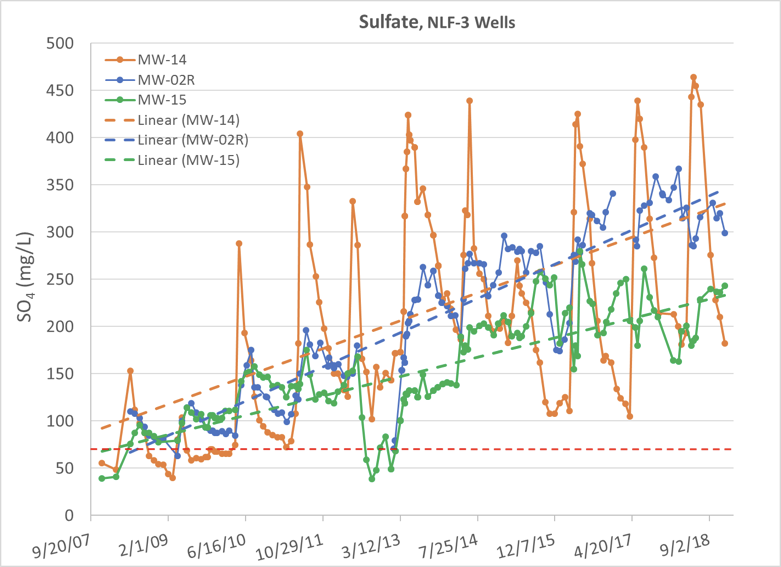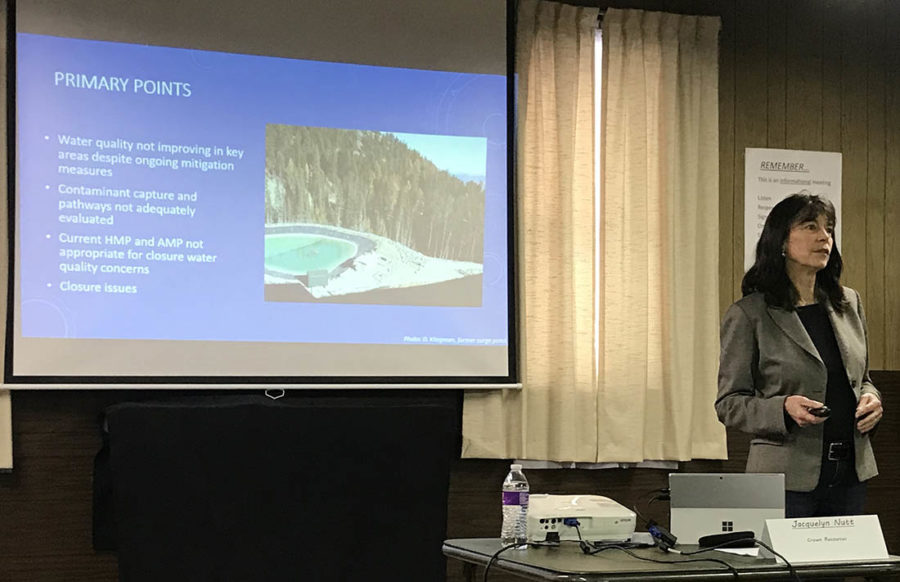Water Quality Contamination

The red dashed line in the above graph shows the allowable (2014 permit) level of sulfate. The other dashed lines show the general trend of sulfate levels in various monitoring locations.
These monitoring wells are located in a fault downgradient from the mine, just outside the capture zone, which is supposed to capture all mine contaminants. Sulfate concentrations in all these monitoring wells (MW) are still increasing. Many values in MW-14 and MW-2R even exceeded the State groundwater standard (250 mg/L — a much higher level than the 69.5 mg/L allowed by the permit). Although MW-14, which is closest to Gold Bowl Creek, had the highest peak concentrations, the recent overall trend in that well could be decreasing slightly.

